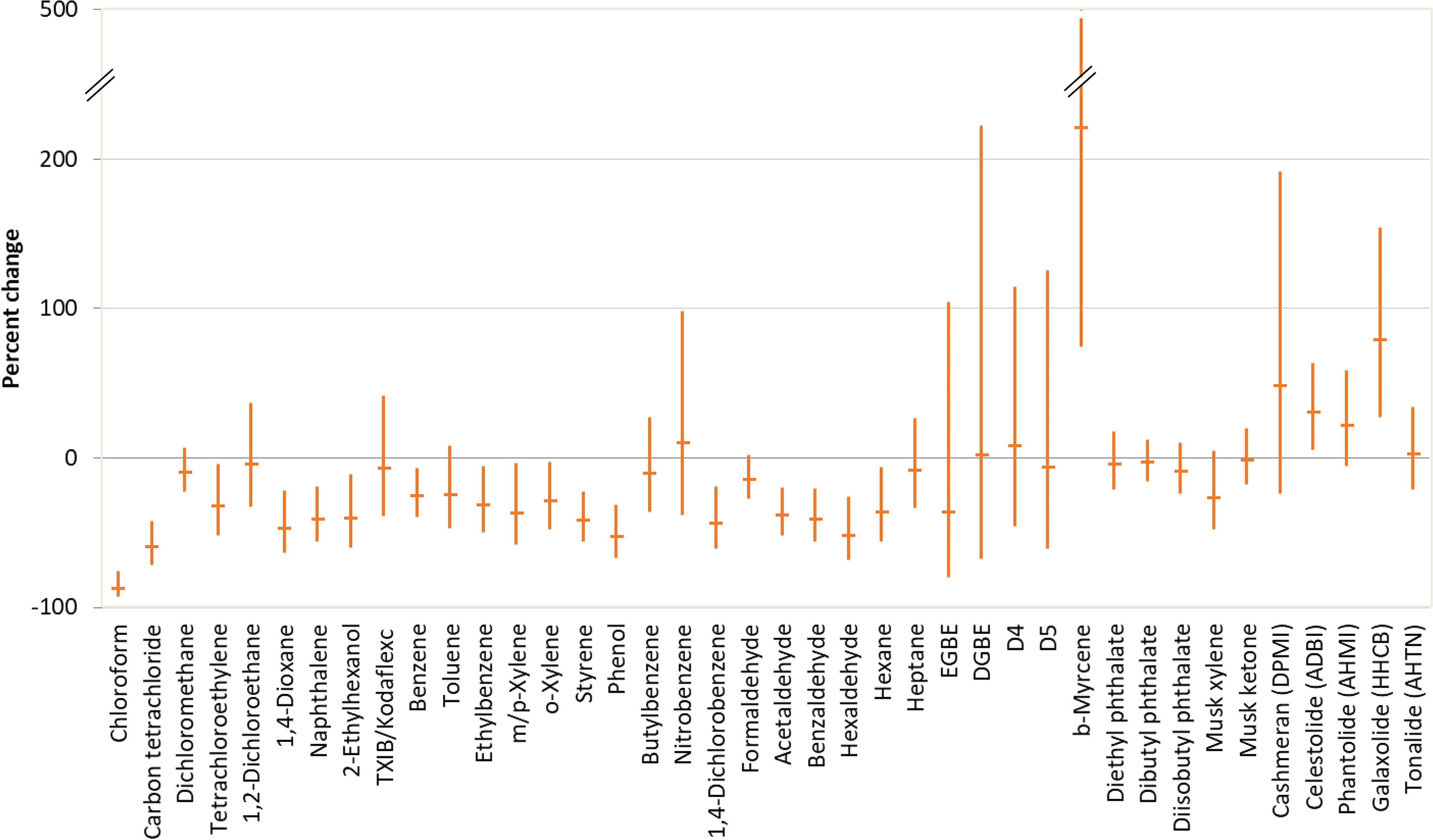Figure 1.

Percent change in geometric mean personal air concentrations of select VOCs and SVOCs comparing postintervention visit (“green” cleaning products) to preintervention visit (conventional products), LUCIR Study, Salinas, California, 2019 (). Percent change is adjusted for household ventilation, use of air fresheners, and smell of smoke in the household. Percent change estimates are from mixed effects models, except for tetrachlorethylene, 1,2,-dichloroethane, butylbenzene, nitrobenzene, 1,4,-dichlorobenzene, phenol, EGBE, and DGBE, which were detected in of samples at any time point and were calculated using Tobit regression models. Note: D4, octamethylcyclotetrasiloxane; D5, decamethylcyclopentasiloxane; DGBE, diethylene glycol monobutyl ether; EGBE, ethylene glycol monobutyl ether; SVOC, semivolatile organic compound; VOC, volatile organic compound.
